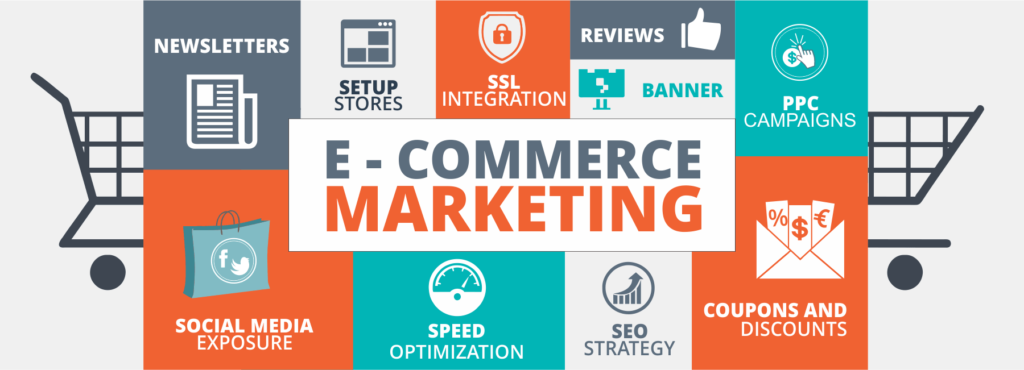
In a world where smartphones are ubiquitous and 76 percent of adults in advanced economies have access to unlimited information, it is no surprise that the future of marketing is online.
A brand’s presence across multiple online and offline channels is essential for modern businesses. But many businesses aren’t taking advantage of it.
Without cohesive multichannel marketing, companies risk alienating a large portion of their customer base.
Despite acknowledging the value of multichannel marketing, many ecommerce businesses admit their efforts are ineffective. Only 11% of brands felt their multichannel marketing was effective in the CMO Council’s 2019 study.
Success in multichannel marketing requires a thorough understanding of the customer’s habits, including their reliance on mobile devices, online channels, and preference for personalized service. Simple to implement, these seven suggestions can boost online sales.
1. Define your target market
Modern shoppers expect a multichannel shopping experience. But who is today’s consumer?
The ‘modern customer’ must first be identified. You are not marketing to everyone on the internet, and some channels will work better than others.
He is connected, adaptable and fickle. They have an average of 5.54 social media accounts and shop on at least two of them. Fortunately, brands can collect data from existing customers to create a persona.
After that, the brand can tailor advertisements to the customer’s preferences and leisure time. Companies that prioritize customer service are more profitable.
2. Choose your target channels
It’s pointless identifying your target demographic if you’re not going to market to them. Identifying your target audience includes knowing their preferred channels and which ones they trust.
If you want to market to older customers, use email and Facebook. Teenagers may prefer Snapchat (41% of 18-35 year olds use it daily) or TikTok.
Similarly, older shoppers trust personalized emails more, whereas younger shoppers relate to TikTok stars more.
AR is increasingly used by consumers to guide purchases. In a world where physical stores are dwindling, AR offers both in-store and online shopping convenience.
3. Make use of cloud-based software
Using a digital operations management platform simplifies multichannel marketing. Digital operations platforms can implement all of these suggestions by centralizing data and creating a brand-specific marketing strategy.
Vendor-specific digital operations platforms (DOPs) allow customers to synchronize marketing across multiple channels.
DOPs make data collection and collation simple, allowing for a holistic business approach where data is shared across channels. A good DOP can influence production, supply chains, customer expectations, pricing models, automation, and AI.
4. Be Consistent—this builds customer trust
A customer immersed in the online experience may lose trust in companies that appear to be scams. When a competitor’s website is just a click away, a customer is unlikely to invest time and money in a company with sloppy social media.
All logos, tones, chat services, and content should be consistent. Mobile bots can help maintain this consistency: A mobile app compiles and syncs the data they collect, reducing human error.
5. Use dynamic remarketing
This is where your brand reappears on the customer’s device after they have left one marketing channel. An ad targeted to them on Facebook after they leave your website, or a personalized discount code in their inbox for items they saw on a promoter’s Instagram story.
Dynamic remarketing includes event-triggered marketing, which can reduce cart abandonment rates by identifying customers who leave a website without purchasing and retargeting them. These incentives may include discounts or promotions, and may be time-sensitive to entice customers to make an immediate purchase.
6. Engage influencers
This strategy works well with both audience identification and dynamic remarketing. People who know their customers and their social media habits can identify influencers who can significantly increase product exposure.
Non-targeted customers will do their utmost to avoid your ads. They are more likely to keep watching if your product appears on a channel they already follow.
Influencers with established fan bases have a loyal following of potential customers. Instagram is a great tool for this and is expected to grow in popularity.
Giveaways or other customer incentives can encourage UGC, as can sponsorships or sponsored reviews in industry publications. Influencer partnerships can also help.
7. Track your campaigns
The data you collect from each set of ads can be invaluable when creating the next set.
Compare the results of each campaign: If one channel receives less traffic than another, it may be worth reducing the budget for that channel while increasing the budget for the others.
Customer experience data allows brands to optimize search results, navigation paths, seasonality, and SEO for maximum campaign efficiency.
Some DOPs, like Shopify, offer reports, analysis, and business planning advice as part of their plans. Brands can edit tags, meta tags, collections, products, and descriptions in the browser of a flexible site like a Shopify ecommerce store.
In Conclusion
Multichannel marketing increases sales significantly, and successful ecommerce businesses use it. Consistency across channels is achieved with DOPs, dynamic remarketing, UGC, and campaign trackers. With customer service and targeted advertising, your ecommerce multichannel marketing will be unstoppable.